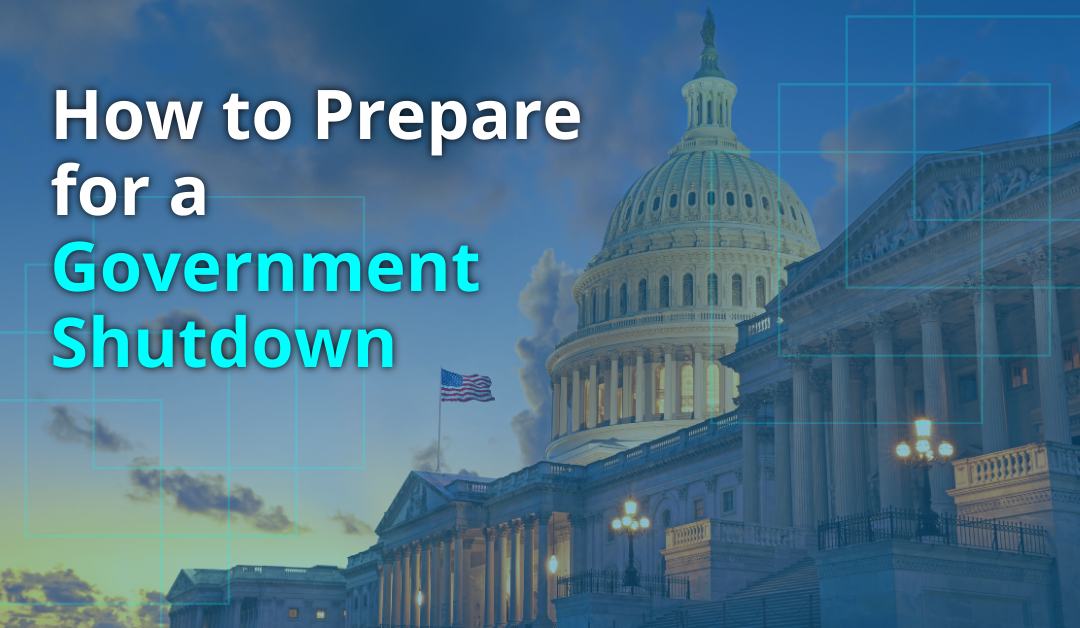The end of the federal fiscal year is swiftly approaching. If Congress fails to pass an appropriations bill or a continuing resolution before October 1, we will witness a lapse in appropriated funds, resulting in a government shutdown. While federal contractors are no strangers to the disruption caused by shutdowns, the extent of their impact varies depending on factors such as contract funding, the essential nature of the work, and the need for access to federal facilities or approval from non-essential federal employees, among other considerations.
To mitigate the adverse effects of a shutdown, contractors should conduct a comprehensive assessment of their contract portfolio, evaluate risks, devise strategies for managing employees and collaborators, and maintain open lines of communication with the contracting officer (CO) to establish performance expectations during the shutdown. Furthermore, once the shutdown commences, contractors must maintain continuous communication with the CO. It’s important to promptly notify them of any unforeseen costs or delays resulting from the shutdown, all while diligently documenting these costs and taking appropriate measures to minimize them.
What to Anticipate
A government shutdown arises from a lack of appropriated funding. During a shutdown, federal agencies are prohibited from initiating new contracts or orders, except for those deemed “essential.” Even if a contract is already funded, a contractor’s ability to fulfill it may be impeded if:
- Government personnel are unavailable to administer contracts, inspect deliveries, perform required tests, or provide necessary approvals.
- Government facilities remain closed.
- The government or other contractors cannot deliver property or materials essential for contract performance.
Preparing for the Shutdown
To reduce the impact of a shutdown, contractors should proactively plan and seek guidance from their contracting agencies. Consider these steps:
Evaluate Your Contract Portfolio and Assess Risk
- Determine if your contracts are fully funded and assess the funding status of incrementally funded contracts. Full funding implies that funds are allocated to cover the fixed-price contract price or the estimated cost and fee for cost-reimbursement contracts. This may allow performance to continue for a specific period during the shutdown, subject to notice requirements.
- Examine whether your contracts rely on government resources for execution, since even fully funded contracts may face performance challenges if they require access to government facilities, personnel, or resources that become unavailable during the shutdown.
- Check your contract for incorporation of clause 252.237-7023 – Continuation of Essential Contractor Services. This clause usually ensures that certain “essential” contractor services continue during a crisis or government shutdown. If your contract incorporates this clause, it means that even in the event of a shutdown, the services outlined in the contract should be expected to continue without interruption. Regardless of the clause’s incorporation, each organization will establish specific guidance and instructions for their contractors, which may supersede the clause’s stipulations.
- Verify which contracts incorporate the stop-work order clause (usually FAR 52.242-15). The issuance of a “stop-work” by the CO is likely if the agency cannot fund a contract during the shutdown. A stop-work should include details about the suspended work, guidance on further orders, instructions for subcontractors, and suggestions for cost reduction. After the shutdown concludes and the stop-work is lifted, contractors can seek equitable adjustments in delivery schedules or contract prices, as specified in FAR 52.242-15(b)(1).
Communicate with Your CO
- Communicate with your contracting officer regarding performance expectations during a shutdown, and make sure to document verbal communications.
- Seek guidance from your CO regarding which activities should continue during the shutdown. Access to government resources and personnel will depend on their designation as “essential” based on OMB guidelines, particularly for incrementally funded contracts.
- Attempt to resolve existing issues before the shutdown, such as contract amendments, before the end of the federal fiscal year on September 30. Once the shutdown begins, contracting officers may lack support and be overwhelmed with emergency matters, potentially rendering them unavailable due to furlough.
Communicate Proactively with Employees and Collaborators
- Keep employees informed and alleviate concerns. If a contract is likely to be halted, explore opportunities for reassigning employees to other projects.
- Proactively inform subcontractors and vendors about the potential shutdown and discuss options for deferring orders or delaying deliveries. Review contracts and supply agreements for clauses related to work suspension and termination for convenience, and remind subcontractors and collaborators to document and mitigate costs.
What to Do During the Shutdown
During a shutdown, you can generally recover overhead, delay, and standby costs attributable to that shutdown, as long as you can substantiate that these costs were a direct result of the shutdown and that you took reasonable measures to minimize them. Consider these steps:
- If work is suspended or partially suspended, only respond to performance directives issued by the CO. Any work undertaken during a stoppage is performed at your own risk unless directed by the CO.
- For contractors on incrementally funded contracts, strictly adhere to the notice requirements stipulated in the availability of funds clause, such as FAR 52.232-20 (Limitation of Cost) and FAR 52.232-22 (Limitation of Funds).
- Utilize suspension of work clauses in subcontracts if the prime contract’s performance is suspended by the government.
- Promptly provide written notice to the CO of any delays or costs incurred due to the shutdown.
- Thoroughly document all costs and expenses, including delay costs (like relocating employees off-site, winding down and resuming work after the shutdown) and unabsorbed overhead costs. Additionally, track standby costs (like retaining key personnel even if they cannot work) using designated billing codes during the shutdown.
- Demonstrate the difficulty of hiring replacement personnel if you must pay key personnel to remain with your company during the shutdown.
- Assume that deadlines, such as filing a bid protest or contract claim, remain unchanged.
- As the shutdown persists, initiate preparations for a request for equitable adjustment (REA) to be submitted within 30 days after the work stoppage ends.
The impending shutdown will hopefully be short-lived if it occurs. Although it is impossible to eliminate the disruption caused by the shutdown, you can minimize the impact by acting proactively.
Whether you are the prime or subcontractor, but sure to reach out to the customer and find out if funding will remain in place for your contract. If possible, submit your invoices early. Keep in mind that it’s reasonable to expect that payments will be delayed, so having a funding plan is essential.
Ask yourself these questions:
- Do you have access to the money to provide payroll and operating expenses on work that may see delayed payments?
- Is your current financial partner aware of the process of either shutdowns or continued resolutions and what this means to your work?
If you have any concerns, questions or would like a consultation, please feel free to schedule some time with our team. We’re dedicated to working alongside contractors to find solutions that fit their business. Don’t wait. Get in touch with our team today.

